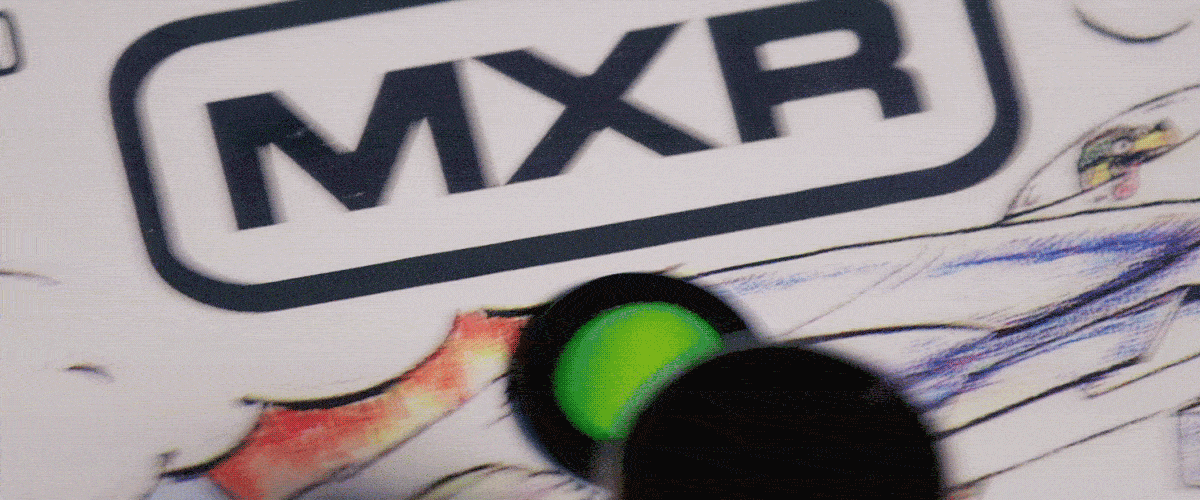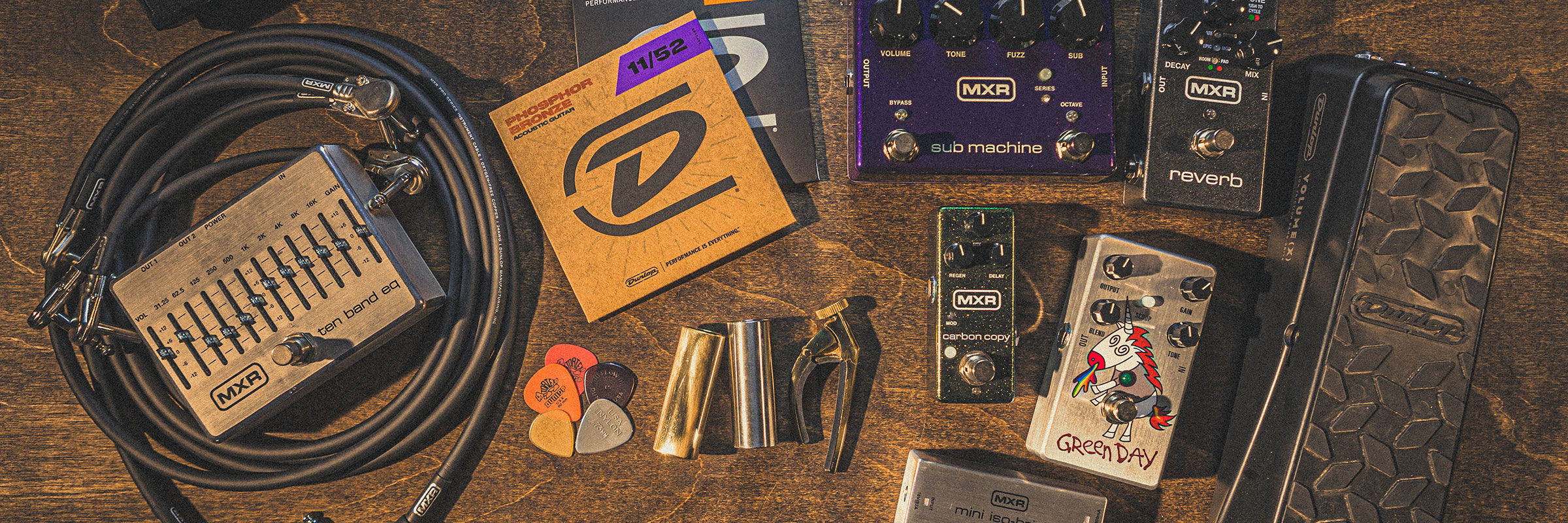Last year, Green Day’s groundbreaking album Dookie turned 25. We celebrated that milestone with a pedal that captures the record’s super rad guitar tones—the dirty and punchy yet articulate sound that would become Billie Joe Armstrong’s signature. He got that sound by running his signal through two heavily modified amplifiers—one scooped with a ton of gain and the other with a well-defined midrange. When it came time to mix the record, the band blended the two signals together in different ratios to match the vibe of each track.
The MXR team carefully dissected that sound and created the Dookie Drive Pedal, a stompbox worthy of the name. That pedal was limited in number, but popular demand inspired us to release a couple more with special finishes. The Dookie Drive Pedal V3—bearing the upchucking unicorn from Green Day’s latest release, “Father of All…”—is available now, so get yours while you can.
In the meantime, check out our video interview with Billie Joe below, as well as our printed conversation with master designer Bob Cedro and gear guru Bryan Kehoe to talk about how the Dookie Drive Pedal works and how they nailed the Dookie tone.






